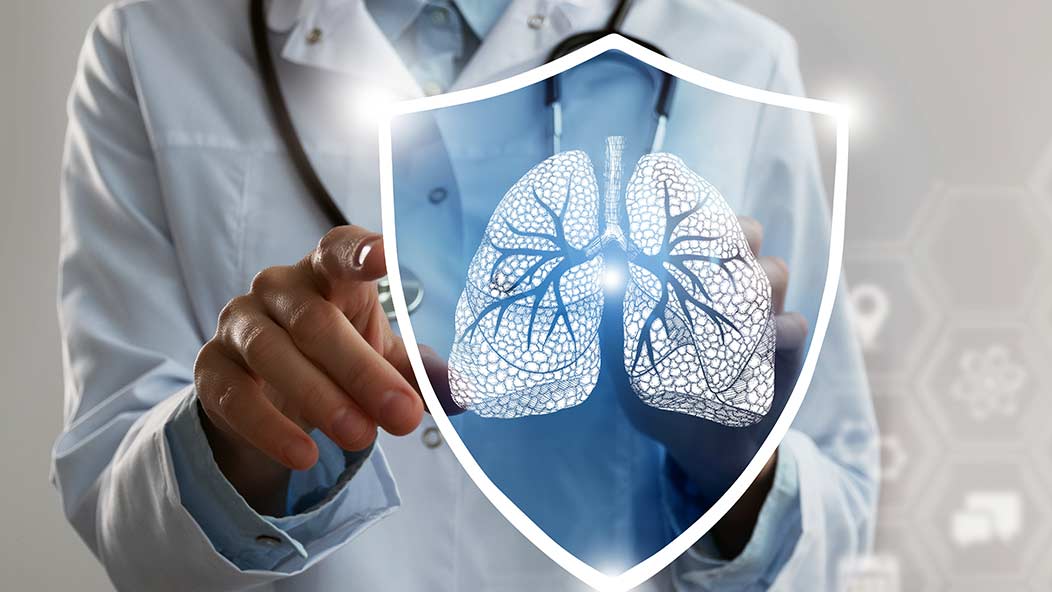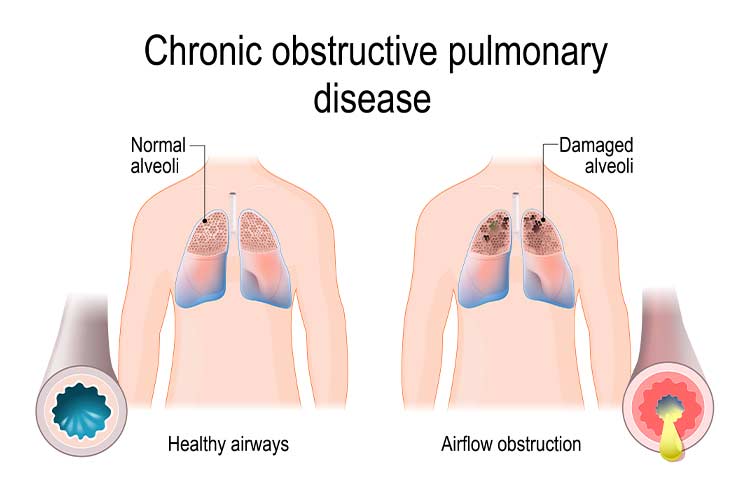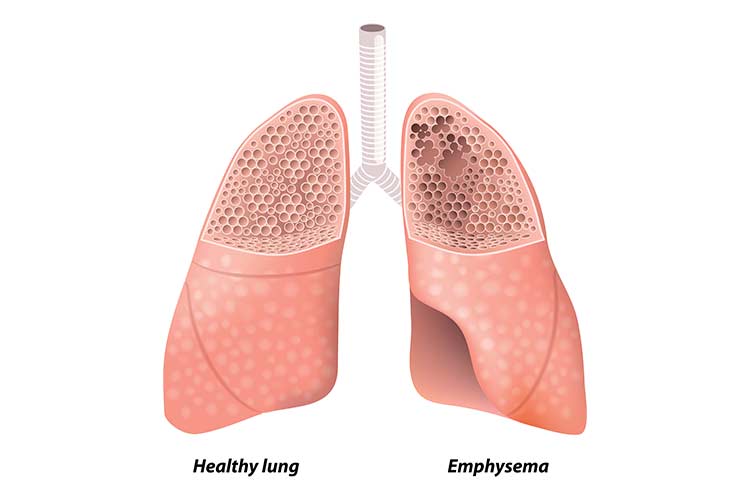
The Difference Between COPD and Emphysema
Navigating medical terminology can be a challenge. Many times, people confuse one condition with another or don’t understand how certain conditions are linked. This is a common issue with lung conditions, particularly COPD and emphysema. The confusion is understandable, especially considering the similarities shared by most lung conditions.
In this case, COPD and emphysema are related but not separate conditions. Emphysema is a chronic lung disease that falls under the umbrella of COPD.
What Is COPD?
Chronic obstructive pulmonary disease (COPD) is a blanket term for a group of lung diseases, including emphysema, chronic bronchitis, and bronchiectasis, that result in impaired airflow. These conditions also damage the lungs over time.

Symptoms that are common to all conditions that are categorized as COPD (but aren’t necessarily present in every case) include:
- Breathlessness and difficulty breathing
- Increased phlegm in the throat and lungs
- Chest tightness
- Chronic cough
- Frequent respiratory infections
- Fatigue
- Wheezing
- Blue lips or nail beds
The most common cause of COPD is smoking cigarettes, which accounts for 85% to 90% of cases according to the American Lung Association. When someone smokes a cigarette, the toxins released when the cigarette burns weaken the lungs against infection, narrow the air passages, cause the air tubes to swell, and destroy the lungs’ air sacs (alveoli).
However, smoking isn’t the only cause of COPD. Environmental factors, such as exposure to air pollution, secondhand smoke, and chemicals, can also contribute to developing one of the conditions that fall under COPD. While these conditions can’t be cured, they can be treated to reduce the severity of symptoms and prevent further lung damage.
The American Lung Association estimates that over 16 million people have been diagnosed with COPD in the United States and it’s the third leading cause of death by disease in the country. COPD may also contribute to lung cancer. Some studies have found that COPD increases the risk of lung cancer by 200% to 500%.
What Is Emphysema?
Emphysema is a chronic lung condition that’s a type of COPD. It develops over time and gradually damages the lung tissue, particularly the tiny air sacs in the lungs. Eventually, the air sacs rupture causing one large air pocket, which prevents oxygen from moving through the bloodstream. It also traps air in the lungs, making breathing more difficult because fresh air (or oxygen) can’t enter. To make matters worse, emphysema sometimes develops in conjunction with chronic bronchitis, which is ongoing inflammation of the airways.
More than 3 million people in the United States have emphysema, but it’s one of the most preventable forms of COPD since up to 90% of cases are caused by smoking. In fact, the lung damage done by smoking tobacco is commonly referred to as “smoker’s lung.” Continuing to smoke once emphysema has started developing will cause the condition to worsen quicker.

Symptoms of emphysema are consistent with the symptoms of COPD, but the severity depends on how long the lung damage has been progressing and the general health of the patient. At times, the symptoms worsen and require hospitalization. These periods are called COPD exacerbations, which are usually brought on by respiratory infections, exposure to air pollution, or breathing in certain odors or fumes, such as a strong perfume or smoke from a campfire.
Although emphysema is irreversible, there are treatments that can slow the progression of the disease and help prevent such complications as exercise intolerance, muscle atrophy, and lung cancer. Depending on the severity of the condition, treatment may include:
- Medications. Although drug treatments currently don’t slow the decline of lung function, they can help increase exercise tolerance, reduce COPD exacerbations, and improve overall health. Common medications for emphysema include bronchodilators, inhaled corticosteroids, and antibiotics for respiratory infections.
- Pulmonary therapy and rehabilitation. Breathing exercises, nutritional counseling, physical activity, and education can help improve quality of life and decrease the number of COPD exacerbations.
- Supplemental oxygen therapy. If medications and pulmonary therapy don’t provide enough relief, oxygen therapy may be used. This entails using a device to deliver oxygen into the lungs and make breathing easier.
- Lung surgery. For those with severe emphysema, surgery may be an option. Lung volume reduction surgery removes damaged tissue, which allows for better exchange of oxygen and carbon dioxide. A bullectomy is another surgical option that removes large air pockets that form in the lungs. Although riskier than other surgeries, a lung transplant may increase life expectancy and offer an improved quality of life.
If you’re experiencing symptoms of emphysema or any COPD condition, talk to your primary care physician or to a pulmonary specialist who can administer diagnostic tests and determine your treatment options, if needed.

